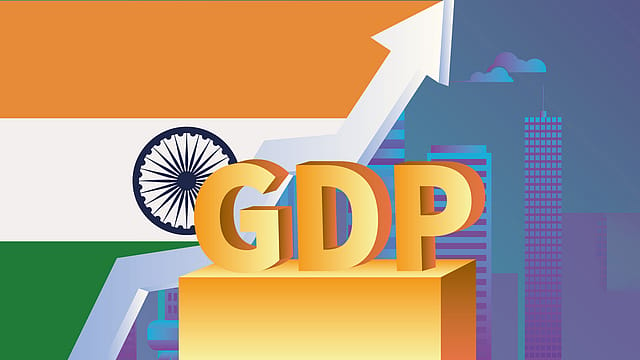GDP: Inflation, rural wage stress leave a gaping hole in consumption story
ADVERTISEMENT

The first quarter GDP number for the financial year 2022-23 released by the government gives a sneak peek into the worrisome trends in both private as well as government final consumption expenditure, pulling down the rate of economic growth below the estimates despite a low base effect.
India's GDP grew 13.5% in Q1, FY23 over the same quarter of the previous financial year. This is significantly down from the 16.2% GDP growth projected for the quarter by the Reserve Bank of India, which estimated GDP growth of 7.2% for the entire fiscal.
Meanwhile, the GDP data from the ministry of statistics and programme implementation reveals that the drag down effect in the national income was created by the sequentially declining private final consumption expenditure and tepid government final consumption expenditure.
A correlation with Index of Industrial production (IIP) for the months of April, May and June this year in the consumer durables and non-durables segment also brings to the fore the pain points in the consumption and demand story of the country.
On the private final consumption expenditure front, the numbers are buoyant when looked at annually. Private final consumption expenditure at constant (2011-12) prices in Q1, FY23 stands at ₹22,07,981 crore, up 26% from ₹17,53,400 crore in the same quarter of the previous financial year.
December 2025
The annual Fortune 500 India list, the definitive compendium of corporate performance, is out. This year, the cumulative revenue of the Fortune 500 India companies has breached $2 trillion for the first time. Plus, find out which are the Best B-schools in India.
However, sequentially, private final consumption has dipped in the last two quarters. It is down ₹54,424 crore in Q1, FY23 over Q4, FY22 and ₹1,22,444 crore over Q3, FY22. It may be noted that the IIP in the consumer durables and non durables too has been on the downward trajectory in the months of April, May and June this year, compared with the month of March.
Economists point out to the rural stress and high inflation having a bearing on the consumption story in the economy.
"Had it not been for high inflation and subdued rural demand due to negative real rural wage growth, private consumption would have grown faster," says Dharmakirti Joshi, chief economist, Crisil Ltd, adding that high net imports and weaker government consumption expenditure kept the overall growth soft.
It may be noted that between 2015-2016 and 2019-20, rural agricultural wages declined across all categories in comparison with the period between 2011-12 and 2014-15. Also, the real wages under every agricultural head like tilling, sowing, winnowing, threshing, and harvesting, among others have turned negative in 2021-22.
Non agricultural wage growth trends in FY22, too, are a spitting image of the agricultural wage trends with the real wage rate in negative across activities. While the rural wages do not seem to have kept pace with the rising inflation, the rural inflation has remained higher compared with the urban inflation since January this year dealing a body blow to the rural demand and finally having a negative impact on the annual income.
In July, for example, CPI inflation rate (rural) stood at 6.80% surpassing the urban retail inflation rate which stood at 6.49%. In May, even though the gap between the headline inflation rates in the rural and urban segments of the economy was not that wide, the former was ahead at 7.08% against 7.01% for the latter.
In the wake of the Russia Ukraine war in April, which saw inflation soaring to an eight-year high, it was actually the rural consumer price inflation at 8.38% which jacked up the average as the consumer price inflation in the urban segment of the economy stood at 7.09%. The last time when the retail inflation in the rural areas was lower than the urban areas was in November last year with CPI (Rural) at 4.29%, and CPI (urban) at 5.54%.
It is amply clear that while the formal segments are coming back on track, the rural and unorganised sectors may need some hand holding for the economic revival to be more equitable.
